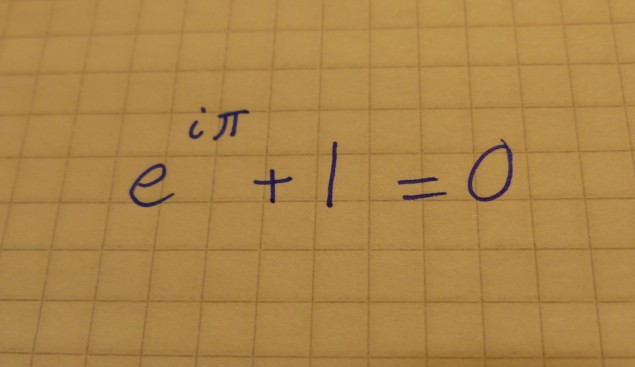
If you have ever talked with your arty friends about the sense of “beauty” you feel from maths, you may well have been greeted with a sympathetic smile. Perhaps even with jeers of derision. Well, next time you find yourself in that position you will have some scientific evidence to back up what you are saying. A group of researchers in the UK has demonstrated that getting your noggin around an equation can trigger the same part of the brain as staring at the Mona Lisa or listening to The White Album.
In an experiment described in Frontiers in Human Neuroscience, 15 mathematicians were presented with a series of 60 equations and asked to rate them for their beauty on a scale of –5 (ugly), through to +5 (beautiful). The same subjects were then hooked up to a functional magnetic resonance imaging (fMRI) machine and asked to view the same list of equations. It turned out that when mathematicians viewed the equations they had previously rated as beautiful, it triggered activity in a part of the emotional brain associated with the experience of visual and musical beauty.*
“To many of us, mathematical formulae appear dry and inaccessible but to a mathematician an equation can embody the quintessence of beauty,” says Semir Zeki of University College London (UCL), the lead author of the study. “The beauty of a formula may result from simplicity, symmetry, elegance or the expression of an immutable truth. For Plato, the abstract quality of mathematics expressed the ultimate pinnacle of beauty.”
Among Zeki’s colleagues in doing the research project was Michael Atiyah, who shared the 1966 Fields Medal, the most prestigious prize that a mathematician can be awarded.
The formula most commonly rated as beautiful in the study, in both the survey and the brain scan, was Euler’s equation, eiπ+ 1 = 0. Interestingly, this equation was also one of the most frequently cited in a survey conducted 10 years ago by Robert Crease, a regular contributor to Physics World. Crease – who is a philosopher and historian at Stony Brook University in the US – asked Physics World readers to name their shortlists of great equations and to explain their nominations. Respondents described the Euler equation as “filled with cosmic beauty”, “mind-blowing” and “the most profound mathematical statement ever written”.
One of the reasons why people so often hail the Euler equation as the beauty queen of maths is that it links five fundamental mathematical constants with three basic arithmetic operations. In addition to being profound in nature, the Euler equation also possesses an aesthetic that is both simple and elegant. Several great physicists have spoken about the importance of seeking elegance and beauty in mathematics. For example, the British mathematician and physicist Banesh Hoffman said of his friend Albert Einstein: “The essence of Einstein’s profundity lay in his simplicity; and the essence of his science lay in his artistry – his phenomenal sense of beauty”.
Crease put it well in his 2004 article when he wrote: “Great equations change the way we perceive the world. They reorchestrate the world – transforming and reintegrating our perception by redefining what belongs together with what.” So 10 years after Crease’s survey, let us know what you think are the most beautiful equations. Either post a comment below this article, or let us know on Twitter using the hashtag #BeautifulEquations.
*FYI brain aficionados: field A1 of the medial orbito-frontal cortex (mOFC).



